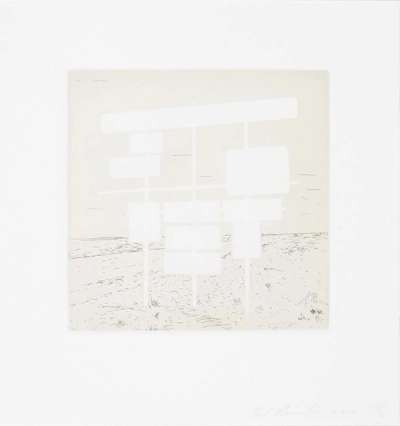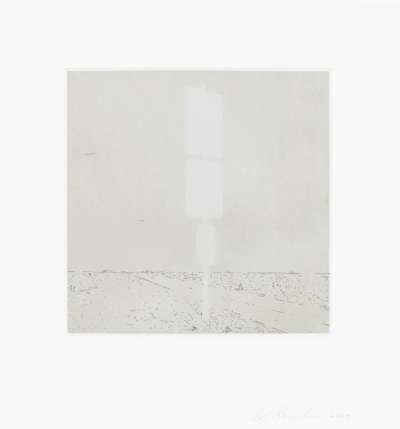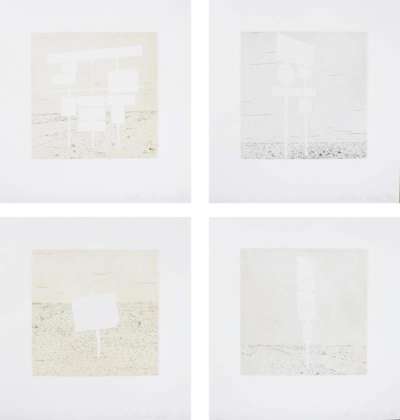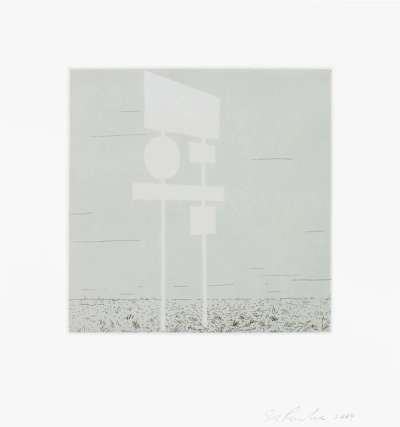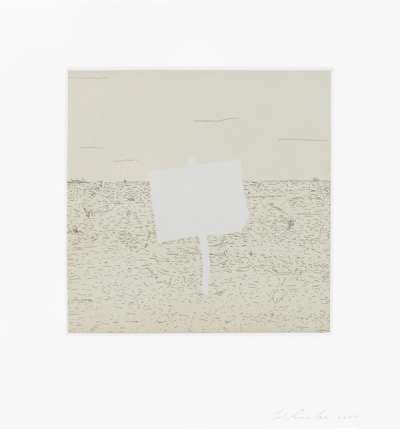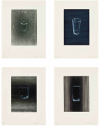Blank
Signs
In 2004, Ed Ruscha produced Blank Signs, a thought-provoking print series, titled Untitled I through to Untitled IV, which presents a meditative exploration of absence and presence within the visual language of signage. By depicting signs stripped of their textual content, the series invites viewers to contemplate the frameworks and spaces that shape communication and perception in the contemporary landscape.
Ed Ruscha Blank Signs For sale
Blank Signs Value (5 Years)
Sales data across the Blank Signs series by Ed Ruscha varies by print. While standout works have sold at auction for up to £11537, other editions in the series remain rare to market or have yet to appear publicly for sale. Of those tracked, average selling prices have ranged from £7166 to £7166, with an annual growth rate of 2.77% across available data. Collectors should note the discrepancy in performance between more visible and lesser-seen editions when considering value potential in this series.
Blank Signs Market value
Auction Results
| Artwork | Auction Date | Auction House | Return to Seller | Hammer Price | Buyer Paid |
|---|---|---|---|---|---|
 Blank Signs (complete set) Ed Ruscha Signed Print | 17 Apr 2025 | Phillips New York | £5,525 | £6,500 | £9,000 |
 Untitled I Ed Ruscha Signed Print | 27 Feb 2014 | Wright | £723 | £850 | £1,100 |
 Untitled IV Ed Ruscha Signed Print | 26 Sept 2013 | Wright | £1,488 | £1,750 | £2,350 |
Sell Your Art
with Us
with Us
Join Our Network of Collectors. Buy, Sell and Track Demand
Meaning & Analysis
The Blank Signs series occupies a unique position within the realm of contemporary art, offering a stark, contemplative look at the structures of communication that pervade the urban environment. Each piece in the series, from Untitled I to Untitled IV, features a sign devoid of text, a blank canvas set against varied backdrops that evoke different aspects of the everyday landscape. This removal of text, the primary function of a sign, shifts the focus to the sign's form, the space it occupies, and our day-to-day reliance on language.
“My work is abstract in the sense that even recognisable objects become just shapes – abstract shapes.” - Ed Ruscha.
This series engages deeply with themes of silence, absence, and the unseen forces that shape our understanding of space and place. The blank signs, by their very nature, challenge the viewer to question what is missing, and why it is omitted. This questioning extends beyond the physical signs to broader considerations of communication and the spaces we navigate daily. The absence of text acts as a placeholder for the myriad messages, instructions, and influences that direct human activity, highlighting the power of what is left unsaid or unseen.
Furthermore, the series can be interpreted as a commentary on the saturation of textual signage in the modern world. In an age where information overload is a common experience, the blank signs offer a moment of respite and reflection, a pause in the constant flow of data and directives. This juxtaposition of absence and presence, silence and noise, creates a dynamic tension that is both visually striking and conceptually rich.
